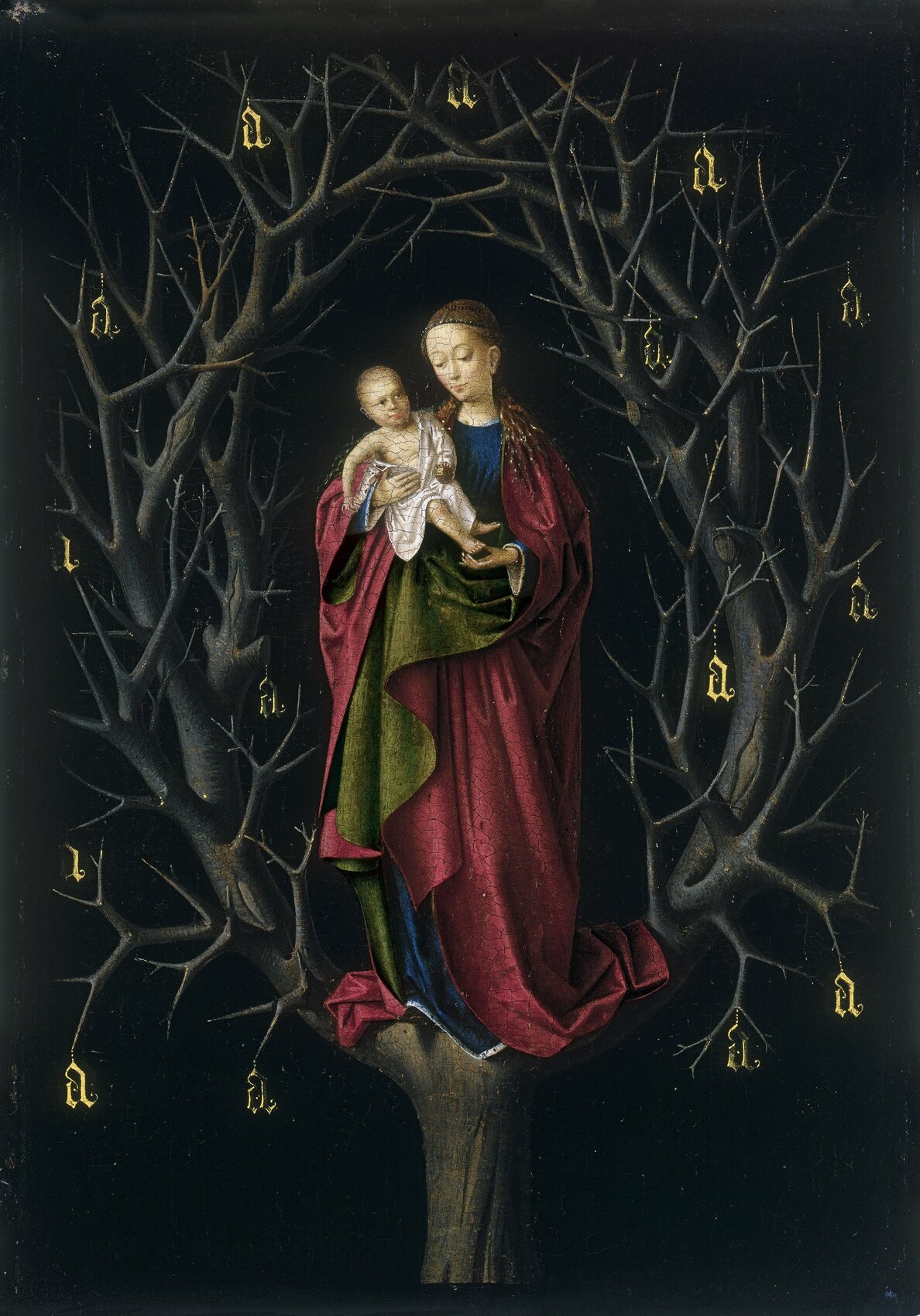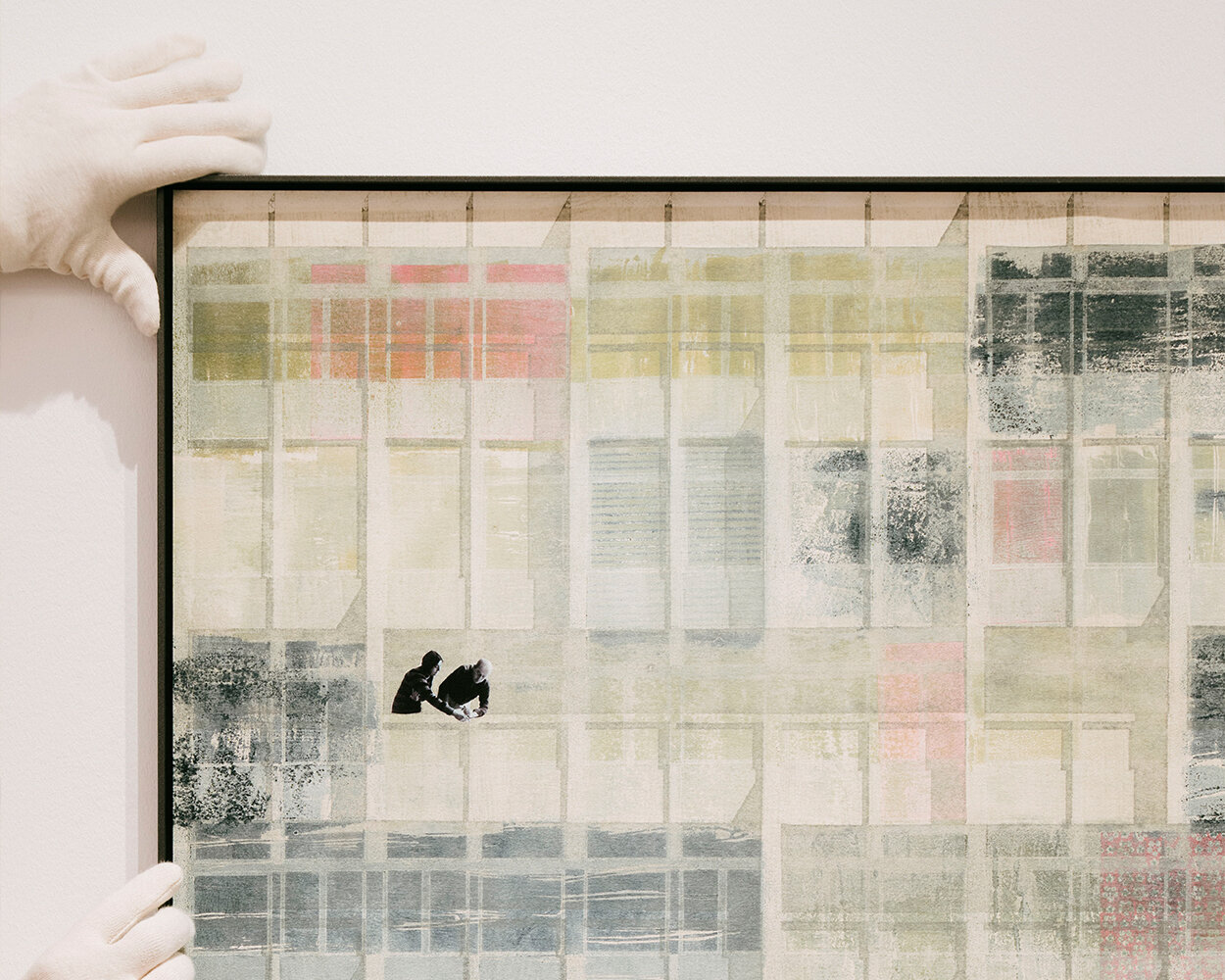La Virgen del árbol seco
Petrus Christus
La Virgen del árbol seco
Biographies
Petrus Christus
Petrus Christus was a Flemish artist born in the city of Baerle-Duc, now Baarle- Hertog, whose activity is primarily associated with Bruges. It is not known where Christus trained or the name of his master or masters.
The subject of this small panel can be directly related to the Confraternity of Our Lady of the dry Tree, whose members included Petrus Christus and his wife. According to 18th-century accounts, the confraternity was in fact founded by Philip the Good. It was said that before the Duke entered battle against the French, the Virgin and Child appeared to him in the trunk of a dry tree. Philip prayed for victory in front of the image, which was granted to him.
The key to the iconographic interpretation of the Virgin in this work is to be found in the Book of Ezekiel. The words “I the Lord […] have dried up the green tree, and have made the dry tree to flourish” were interpreted as a clear reference to Original Sin and to Mary’s role as the New Eve. The dry tree is identified with the Tree of Knowledge, which withered following the Original Sin but which would flower again through Christ’s conception. In addition, the bent and interlaced dry branches of the tree assume the shape of a crown that clearly refers to his future Passion.
From its high degree of finish it seems likely that the painting was conceived as a precious object, again suggested in the clear emphasis on materials and textures. Hanging from the branches are fifteen golden “As” that symbolize the first letter of the Ave Maria or “Hail Mary”. The number fifteen has been related to the mysteries of the rosary, used to pray to Mary, the intercessor between man and God.
High resolution pigment ink on cotton paper
5.8 x 4.9 in
Same size as original
Next unit for sale No. 2
Open edition. Produced on demand
Certificate of authenticity included


4.9 in
5.8 un
Petrus Christus
Petrus Christus was a Flemish artist born in the city of Baerle-Duc, now Baarle- Hertog, whose activity is primarily associated with Bruges. It is not known where Christus trained or the name of his master or masters.
Thyssen
The Thyssen-Bornemisza National Museum is a Madrid art gallery exhibiting the works of old and modern masters. It owes its existence to the lease agreement (1988) and the subsequent acquisition by the Spanish Government (1993), of the most valuable core of the private collection built over seven decades by the Thyssen-Bornemisza family.
